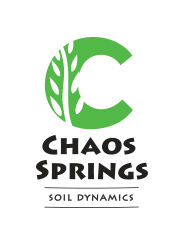How Plant Extracts Helped Transform Our Farm
/During our years at Chaos Springs we have continually experimented and used a variety of plant extracts for managing the soils in our pastoral, orchard and market garden systems.
This direction was initiated when we first purchased our farm in 2001. At that time we knew little about New Zealand flora or pastoral systems as we had been market gardening in Utah for 20 years.
We were so excited about the farm we had just purchased covered in beautiful yellow flowers we never thought they would be a problem. A week later when Jenny’s father Dennis arrived for a farm tour, I thought he was going to break into tears. We tried to reassure Dennis that getting rid of ragwort and gorse would not be that difficult organically………………………………
Unlocking the Power of Plant Extracts
We had made a few plant extracts in Utah, mostly from comfrey. We were familiar with Elaine Ingham’s work on soil biology and in particular the concepts of plant succession kept coming to mind. Basically the theory is that soils go through transitions over time.
Soils all begin as rock and in the early stages of soil development bacteria are the main drivers of soil advancement. As soils progress through succession they develop more and more complex microbial communities and as these changes occur, the plant species that grow also change.
Early successional plants basically work themselves out of a job by changing the soil for the next group of plants. This has a lot to do with the bacteria and fungi ratios in the soil but is much more complex than just that.
We thought that the excessive ragwort in our paddocks was an indication of the soil's condition and wondered if it was possible to change the soils by using those very plants to move the soil in a particular direction.
So, with little more than a notion of what might happen, we began making simple extracts out of ragwort. We added these extracts to our compost tea mixtures and we sprayed them onto the paddocks straight out of the vat they were made in. Within a year we knew we were having an effect.
Some paddocks never grew ragwort again and within 3 years there was little ragwort left to even make the extracts from.
Include Plant Extracts in a Complete Farm Fertility Program
Now, changing soils is not as simple as just making an extract out of an undesirable plant and expecting it to disappear. We embarked on a number of strategies to improve our soils including compost teas, some fine mineral applications, a change in the pastoral management, and some Biodynamic practices.
As we traveled down the plant extracts path we researched and experimented with a wide variety of plants and extraction methods. Today more than ever we are strong believers in the power plant extracts have in a complete farm fertility program. As a result of our success, we have organised plant extracts into a couple of categories and process methods.
Agents of Change
These plants are usually early succession plants that can spread prolifically and are generally there to change the soil for the next generation of plants. They are really trying to help correct a problem. You often get these plants after a disturbance such as when pastures get pugged by animals, over application of fertilisers, application of herbicides or pesticides, plowing, flooding etc. We believe that making extracts out of these plants and applying them back onto the land can help accelerate this process of correcting soil imbalances.
General Biological Nutrition
All plants contain specific minerals in their composition. By making and using plant extracts you can utilise not only the mineral content of these plants but also the other biological food sources that they contain. Comfrey is a great example of this and one of the best plants you can grow to produce plant extracts for your fertility program.
Example of comfrey mineral composition
Plant Extraction Processes
Casuarina water extract in a 1000 litre plastic pod
Water Extraction
With water extraction you simply take your plant of choice, harvest it, and pack it into a vessel. Fill with water and let the process begin. In six to twelve weeks you will have a liquid that is ready to use for your desired result.
Pressed Extracts
With pressed extracts we use pressure to extract what we are after. Plant material is harvested and packed into a vessel. Then a weight is put on top of the plant material and gradually the material starts to break down. In about two weeks you will be able to decant the liquid being produced by this biological process. This method is best with soft leafy materials.
We believe that Plant Extracts should be part of every farm fertility program. If you would like to know more about making and using this powerful tool, we suggest reading our e-book, A Simple Guide to Farm Specific Plant Extracts. This book contains comprehensive information, recipes, and explanations gleaned from our years of experience with this complex art and science. THIS GUIDE IS CURRENTLY UNAVAILABLE AS IT IS BEING UPDATED
We would love to hear about your experiences with Plant Extracts, and we're happy to answer any questions you may have too - drop us a line in the comments below. We are always happy to talk about all things soil fertility, farming, and plants!



